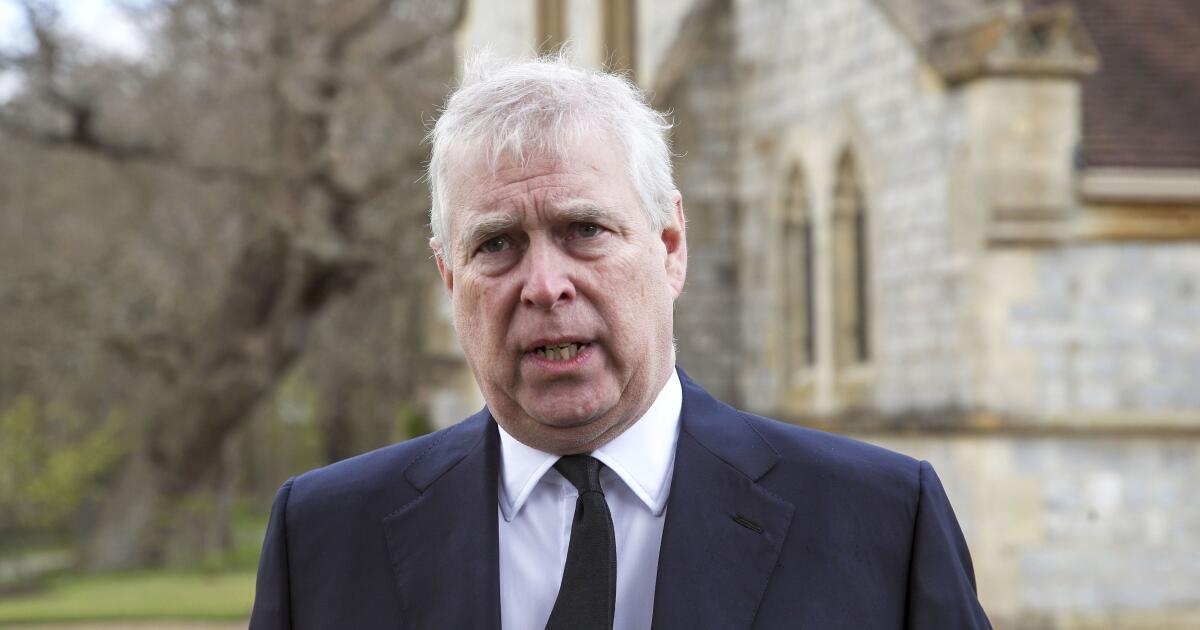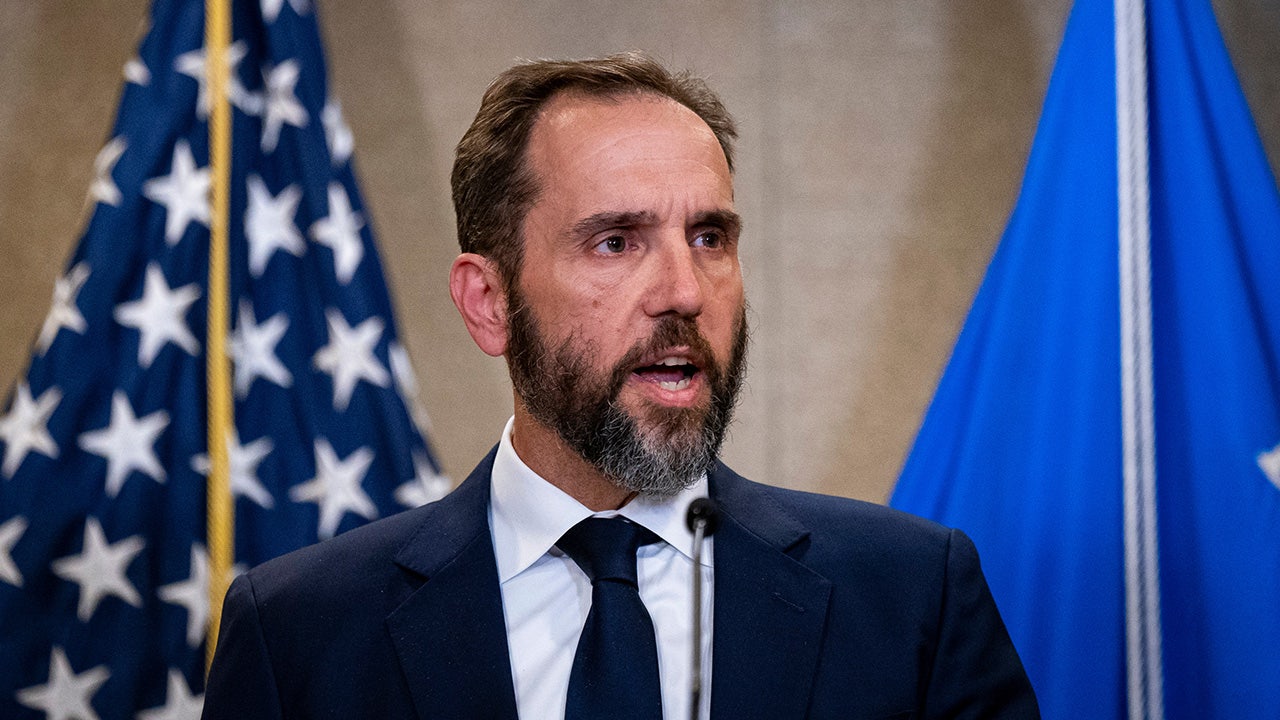Entertainment
Eric Wareheim wants to feed you steak

For three years, Eric Wareheim ate a lot of steak.
We’re talking three steakhouse meals a day, complete with sides and sauces. Towers of onion rings stacked high, bone-in rib-eyes, bubbling pots of lobster mac and cheese, fries and meats drowning in au poivre. His mission in traversing the country was, in part, figuring out how to define the “uniquely American” institution at the center of his new cookbook, “Steak House: The People, The Places, The Recipes.”
The comedian and director who made his name with the TV series “Tim and Eric Awesome Show, Great Job!” has, in recent years, dipped into the wine trade as a co-founder of Las Jaras and launched a plant-art business. But of all his enterprises and hobbies, “Steak House” proved the most demanding — and one of the most rewarding.
“I went deep and I don’t regret it,” he said from a red leather booth at the Smoke House in Burbank.
Eric Wareheim’s new cookbook, “Steak House,” surrounded by a classic spread from Smoke House.
(Gabriella Angotti-Jones / For The Times)
Wareheim, co-author Gabe Ulla and photographer Marcus Nilsson originally set out to document the country’s 10 “best” steakhouses, but ended up visiting more than 70 restaurants — and went so far over budget that Wareheim began financing their research himself. It‘s been a long time, he said, since he’s felt that deep passion and conviction for a project.
“I could honestly say this project was more work-intensive and longer than any project I’ve done, any film or TV show I wrote,” Wareheim said. “Because I really care about the people, it was bigger than just vanity. It was important that I did it right.”
Making of a steak maven
Through Wareheim’s travels in entertainment, wine and food, he’s dined at some of the finest restaurants in the world. But he‘s never forgotten the steakhouse of his childhood, which wasn’t so much a classic interpretation but a place called Seafood Shanty, located in the largest mall in Pennsylvania. He fell in love with the large booths, the AC cranked up high, the seafood and the steak.

While Wareheim loves a martini (gin, stirred and garnished with blue cheese olives, ideally), “Steak House” devotes a chapter to pairing wines with steak. His winery, Las Jaras, just released a Steak House Cabernet Sauvignon for the occasion.
(Gabriella Angotti-Jones / For The Times)
Later, he learned his way around eating rib-eye in a tuxedo as co-host of the long-running Beefsteak — an annual steak-centered fundraiser at Neal Fraser’s Vibiana in the spirit of the 1930s-era utensil-less meat feasts described in a classic Joseph Mitchell story.
But it’s not just the steak that Wareheim loves. The comfort and gravitas of a carpeted, worn dining room and a menu that rarely changes are also essential to Seafood Shanty and steakhouses across the country.
“I think that’s the bigger story of this book: the giving of joy that these places do,” he said. “It is their job. It isn’t their job to get a Michelin star. It isn’t their job to get on a blog or make some new dish to wow some hipster. It’s to make the same consistent food for a person that’s been coming here for 50 years.”
And in a time when the country feels more fragmented than ever, Wareheim sees it as a kind of connective tissue. “Everyone,” he said, “loves a steakhouse.”
The son of a German immigrant, Wareheim set out to understand the web of cultural influences that contribute to the modern American steakhouse: There are spotlights on David Chang’s interpretation at L.A.’s Majordomo, where flatbread — or bing — replace traditional dinner rolls and the prime rib features a shio koji rub. Did a fully Vietnamese version of the steakhouse exist? What about a Mexican iteration?
“There are parts of this country that still feel like the Wild West, in a good way,” Wareheim said. “You can experiment, you can be anyone and open up a steakhouse. You can just do your own thing.”
Los Angeles and Las Vegas steakhouses, he believes, lean into the Rat Pack era of red leather booths and massive shrimp cocktails. But by no means do steakhouses need to follow that path, or any other.
Prime cuts
“Steak House” is 200 pages of sheer Americana, and a slice of quick-disappearing history.
Places “were closing, literally, a week after we were there, or bought up by restaurant groups,” Wareheim said. By the time he’d made it to Cattlemen’s, in Dallas, half of it was already demolished to make way for more modern renovations. “Steak House” arrived right on time to capture some of the country’s best mom-and-pop operations.
He’d been searching for inspiration, unsure how to follow his 2021 bestselling cookbook, “Foodheim.”
While shooting a commercial with his longtime creative partner Tim Heidecker, surrounded by large corporate chains in North Carolina, Wareheim took to researching nearby restaurants: a pastime while on the road for every gig.
“That’s all that matters,” he said. “The job doesn’t matter. It’s like, ‘Where are we eating?’”
Wareheim’s restaurant-curator reputation was on the line: Beef ’N Bottle, which he’d found on Google, was an hour from their hotel and he was the only one who wanted to make the drive.
“We get there, and it’s just perfection,” he said. “It was like a William Eggleston photo. And then we met Jerome [Williams], and he greeted us with open arms and said, ‘You guys have a great time tonight, I’m your server and your bartender, what kind of martini do you want?’ And those three things? I get goosebumps just telling you.”
Williams and the other faces and roles that provide the charm and hospitality of a steakhouse are featured throughout, adding context and personality to a tome that provides recipes and history as well as a glimpse behind the curtain. There’s the “cellar rat” turned sommelier who worked at Tampa’s Bern’s for over three decades. There’s Chicago’s Durpetti family, who’ve been serving Italian and steakhouse classics and employ a valet who might even offer you cigarettes from his own stash. There’s the “legend” Katrina, a dancer and bartender at Portland’s famous strip club-cum-steakhouse, Acropolis.
“Meeting the people who make these places run was a joy, and how passionate they were is as passionate as I am,” Wareheim said.

Wareheim’s new cookbook, “Steak House,” dives deeper than recipes, with portraits and profiles of the chefs, servers and cleaning staff who make steakhouses run.
(Gabriella Angotti-Jones / For The Times)
To find these places and people, Wareheim researched restaurants online and asked chef and entertainment friends their personal favorites. (The resounding winner? The Golden Steer in Las Vegas.)
He received rare, full access to Peter Luger in New York City and recipe guidance from the likes of Sean Brock, Jon Shook, Vinny Dotolo and Fraser. When restaurants couldn’t divulge their secret recipes, some attempts required a full reverse-engineering to figure them out — a specialty of L.A.-based recipe developer and food stylist Jasmyn Crawford. A lot of their own recipes, Wareheim said, turned out better than the originators.
He and his team accumulated so much material that they had to cut dozens of profiles and recipes from the final product, a process that Wareheim called excruciating.
“It was brutal,” he said. “It was harder than any film I’ve cut, any video, any piece of writing.”
What remained in “Steak House” were Wareheim’s prime cuts. T-Pain shows off his favorite haunt in Atlanta. In L.A., At Taylor’s in L.A., Wareheim sits down with Bob Odenkirk, Heidecker and John C. Reilly, and they discuss past jobs working in restaurants. (Notably omitted from the book is the fact that as a teen, Wareheim used to flip burgers and would make six for himself, then eat them while hiding in the bathroom; a co-worker narced and he was fired.)
Wareheim is just as interested in rumination as recipe.
What makes a steakhouse? Does it require attention to marbling and dry aging? Must it serve creamed spinach? Can it be Seafood Shanty, tucked into a sprawling mall in Southeast Pennsylvania? The train of thought derails as soon as the server at Smoke House presents a large silver tray, its display slices of cakes layered and its pies adorned with ice cream.
An enthusiastic “Oh wow!” escapes Wareheim’s lips before he orders the coconut cake. Why bother classifying the steakhouse at all when you can simply be wowed by it?

Movie Reviews
The Taj Story Movie Review: When a search for truth turns into a trial of patience

Story: Vishnu Das, a tour guide at the Taj Mahal, faces public humiliation after a video of his candid opinions about the monument goes viral. Determined to reclaim his dignity, he sets out on a quest to uncover what he believes is the real story behind the Taj.Review: ‘The Taj Story’ follows a familiar path reminiscent of films like ‘The Kerala Story’ and ‘The Bengal Files.’ It attempts to unravel what it calls the “real” history of the Taj Mahal, suggesting through dramatized research and testimonies that the monument was once a palace owned by King Jai Singh and later acquired by Emperor Shah Jahan. The film uses its narrative to project this interpretation with conviction. The first half holds attention as Vishnu Das, the protagonist, fights to have his public interest litigation taken up by the court. But the second half becomes bogged down in repetitive arguments, counterarguments, and lengthy court scenes that dilute its impact. While it aims to challenge long-held narratives, it ultimately struggles to stay engaging as it keeps circling the same debate without fresh insight.The story begins with Vishnu Das (Paresh Rawal), a veteran guide who has spent thirty years showing tourists around the Taj Mahal. When he decides to contest for the post of president of the guides’ association, a journalist interviews him about the monument’s history. Unable to answer probing questions, he later confesses during a private drinking session that much of what he tells visitors about the Taj is not true. When this confession is captured on video and goes viral, he becomes a social outcast, suspended from duty while his son, Avinash (Namit Das), faces the fallout. Humiliated and furious, Vishnu seeks legal help from a local lawyer, Shashikant (Brijendra Kala), who advises him to file a PIL after backing out of the case himself. Once the court accepts the plea, a long legal battle unfolds between Vishnu and the opposing counsel, Anwar Rashid (Zakir Hussain), each armed with historical interpretations and moral convictions.From the outset, it’s clear where the story is headed, and the film rarely deviates from that predictable route. Narratively, ‘The Taj Story’ lacks creative spark—it unfolds in a linear fashion with no real surprises. The first half works better as it captures Vishnu’s family life and his determination to stand by his beliefs. But the courtroom-heavy second half becomes a slog, filled with expert testimonies, threats, and predictable dramatic beats. The tension feels rehearsed, and the dialogue-heavy exchanges test one’s patience. Still, there are brief flashes of sincerity in moments where the film reflects on the personal cost of obsession and truth-seeking, even if it’s weighed down by excess exposition.Paresh Rawal lends sincerity and a touch of humour to Vishnu Das, giving the film its rare moments of spark. His wit and quiet defiance keep the proceedings from turning entirely lifeless. Zakir Hussain as the opposing lawyer Anwar Rashid is suitably commanding, while Namit Das and Amruta Khanvilkar play their parts earnestly, though they’re underused and underwritten. In the end, ‘The Taj Story’ is a middling watch that plays safe within a familiar framework. It raises provocative questions but stops short of exploring them with nuance or restraint. What remains is a film that wants to be bold but ends up being predictable—a tale that begins with curiosity and ends with fatigue. Ultimately, it neither shakes your beliefs nor stirs your emotions, leaving you detached from its intent. With sharper writing and tighter direction, it could have been the thought-provoking film it aspires to be.
Movie Reviews
‘Bugonia’ Movie Review: Wonderfully Weird and Disturbingly Smart

Bugonia Movie Review
Yorgos Lanthimos’ films are either something you love or you leave the theater asking WTF did you just watch. But for me, I love his work. It’s delightfully original and unpredictable (though I did predict the ending in this one—as there are some easter eggs for you to pay attention to throughout). With “Bugonia,” Lanthimos delivers a wonderfully weird film that does a superb job of conveying a powerful cultural message about corporate greed, environmental collapse, and the dangerous allure of conspiracy thinking.
This is Lanthimos at his most provocative, crafting a darkly comedic thriller that feels uncomfortably timely in our current age of misinformation and ecological crisis (not to mention all the talk and conspiracy around 3I Atlas this week and the question of whether or not we’re alone in the universe). The film asks thorny questions about power, exploitation, and whether humanity is worth saving at all… questions that linger long after the credits roll.
So, What’s Bugonia About?
Bugonia follows Teddy Gatz (Jesse Plemons), a sweaty, paranoid beekeeper and conspiracy theorist who believes Earth is under the control of aliens from the Andromeda galaxy. Working a menial job at a pharmaceutical warehouse while tending to his backyard bee farm, Teddy has fallen deep into the rabbit hole of online conspiracy theories. He’s convinced that Michelle Fuller (Emma Stone), the ruthless CEO of the company he works for, is actually an alien intent on destroying humanity through colony collapse disorder… the mysterious phenomenon killing off bee populations worldwide.
Enlisting his impressionable teenage cousin Don (Aidan Delbis), who is on the autism spectrum, Teddy kidnaps Michelle and confines her in their dilapidated basement. What follows is a claustrophobic psychological battle as Teddy attempts to torture a confession out of Michelle. At the same time, Michelle is using every manipulation tactic in her corporate playbook to try to escape. The film is loosely based on the 2003 South Korean cult classic Save the Green Planet! by Jang Joon-hwan, but screenwriter Will Tracy (Succession, The Menu) reimagines it for our current moment of conspiracy culture and corporate malfeasance.
The setup sounds bonkers… and it absolutely is… but Lanthimos grounds the absurdity in real anxieties about class exploitation, environmental destruction, and the sense that ordinary people have been abandoned by a system that doesn’t care about them. Teddy may be unhinged, but his rage isn’t entirely misplaced.
Bugonia Movie Trailer
Bugonia Movie Review: What I Liked and Didn’t Like
What I found most thrilling about Bugonia is how expertly Lanthimos keeps you off-balance throughout. For most of the runtime, we’re led to believe that Teddy is simply a dangerous, paranoid individual losing his grip on reality. Michelle’s denials seem entirely reasonable. However, Lanthimos plants subtle clues that prompt you to question everything. Is she playing him? Is she actually an alien? The film walks this tightrope with remarkable dexterity, and that ambiguity becomes the source of tremendous tension.
While Bugonia is largely successful, there are moments where it doesn’t quite work. Some of the supporting characters feel underdeveloped, particularly Stavros Halkias as a bumbling, inappropriately sexual cop investigating Teddy’s home. The character provides occasional comic relief but feels like a vestige from an earlier draft that doesn’t quite fit the film’s increasingly dark trajectory.
The film’s structure, which is divided into three acts marking the days until the lunar eclipse when Teddy believes Michelle’s mothership will arrive, sometimes makes the pacing feel uneven. Certain sequences in the basement drag on, though the psychological warfare between Stone and Plemons remains compelling throughout. There are also several plot threads that feel frustratingly unresolved, including aspects of the pharmaceutical company’s broader operations and some of the conspiracy theories Teddy references, but the film never fully explores.

The Script
Will Tracy’s screenplay is wickedly sharp, filled with darkly comic dialogue that cuts to the bone. The conversations between Teddy and Michelle function as ideological sparring matches. He’s convinced she represents alien overlords destroying the planet, while she insists she’s just a businesswoman making difficult decisions. What makes these exchanges so effective is that both characters have valid points buried beneath their rhetoric.
Tracy, whose work on Succession and The Menu demonstrated his talent for skewering the ultra-wealthy, brings that same satirical edge to this project. Michelle’s corporate doublespeak, offering employees the “option” to leave work at 5:30 pm while making it clear no one should actually take that option, rings painfully true. The script doesn’t let her off the hook for the exploitation her company engages in, even as it acknowledges Teddy’s response is unhinged.
The title itself carries layers of meaning that deepen the film’s themes. “Bugonia” refers to an ancient Greek belief that bees could spontaneously generate from the corpses of cattle… a ritual of death creating new life. It’s a perfect metaphor for the film’s central question: can something good emerge from something rotten? Can humanity be redeemed, or must it be sacrificed for Earth to survive?
Tracy’s script is most effective when exploring how conspiracy thinking emerges from legitimate grievances. Teddy isn’t wrong that pharmaceutical companies have caused immense harm, that wealth inequality has skyrocketed, or that bee populations are collapsing. Where he goes wrong is misidentifying the source… blaming aliens rather than recognizing the systemic forces actually responsible. It’s a pointed commentary on how conspiracy theories often start with real problems before spiraling into fantasy.
The dialogue crackles with tension and dark humor. When the chained-up Michelle pleads, “Can we have a dialogue, please?” and Teddy shoots back, “Don’t call it a dialogue. This isn’t Death of a Salesman,” it’s both genuinely funny and revealing about how each character views their predicament. Tracy’s ear for how people talk past each other, each trapped in their own worldview, gives the film much of its unsettling power.

The Acting
The performances are nothing short of extraordinary. Stone and Plemons, reuniting after they collaborated on last year’s Kinds of Kindness, create an electric dynamic that feels like watching two master chess players trying to outmaneuver each other. Stone turns in what might be a career-best performance, which is saying something for a two-time Oscar winner. Even with her head shaved and covered in antihistamine cream (Teddy believes this prevents her from communicating with other aliens), she commands every frame with fierce intelligence. Her take on Michelle alternates between haughty corporate speak, desperate bargaining, and calculating manipulation, and Stone makes each shift feel completely authentic.
Plemons delivers an absolutely towering performance as Teddy, making him simultaneously terrifying and heartbreakingly pitiable. He embodies the sweaty paranoia of someone who has lost themselves in conspiracy theories, yet Plemons never lets us forget the wounded soul underneath. When we eventually learn the personal tragedy that fuels Teddy’s vendetta – his mother (Alicia Silverstone in a brief but haunting appearance) fell into a coma after participating in one of Michelle’s company’s disastrous drug trials – his actions take on a devastating new dimension.
But the real heart of the film belongs to Aidan Delbis as Don, making his feature film debut at age 19. Playing a character who, like himself, is autistic, Delbis brings an understated innocence that serves as the film’s emotional anchor. Don loves his cousin Teddy. He’s the only family he has, but he’s deeply uncomfortable with the violence and increasingly questions whether what they’re doing is right. Delbis holds his own against two powerhouse actors, and his performance is so moving that Lanthimos reportedly teared up on set for the first time in his career.
The Visuals
The film’s visual approach, captured by cinematographer Robbie Ryan using the high-resolution VistaVision format, creates an intensity that perfectly matches the material. The stark contrast between Michelle’s sterile corporate world and the ramshackle decay of Teddy and Don’s home becomes a visual metaphor for the class divide at the film’s core. The basement torture sequences are lit with harsh, unforgiving brightness, making everything feel uncomfortably exposed, while the flashback sequences adopt a dreamlike black-and-white aesthetic.

Overall Thoughts
Bugonia is Lanthimos’ most accessible film, which is saying something for a movie about conspiracy theorists kidnapping a CEO they believe is an alien. Unlike the baroque excess of Poor Things or the anthology structure of Kinds of Kindness, this is a relatively straightforward three-character chamber piece. But don’t mistake accessibility for simplicity. This is still deeply weird, frequently disturbing, and builds to one of the boldest endings I’ve seen in recent cinema.
The film’s final act delivers the kind of gut-punch twist that recontextualizes everything that came before. Without spoiling specifics, I’ll say that if you’ve been paying attention to the clues Lanthimos plants… you might see the ending coming. I certainly did, and it made the ending land even harder because of how meticulously it’s been set up.
What makes the conclusion so effective is that it doesn’t offer easy answers or comfort. This isn’t a film about heroes triumphing over evil. It’s about systems of power, cycles of violence, and the question of whether humanity has become too corrupted to save. The final images, which I won’t describe here, are haunting and deeply pessimistic about our collective future. Some viewers will find it nihilistic; I found it bracingly honest about the state of the world.
Bugonia isn’t perfect. Some subplots feel underdeveloped, the pacing occasionally drags, and not every tonal shift lands perfectly. But when it works, which is most of the time, it’s thrilling, thought-provoking, and genuinely unpredictable. The performances are career-defining, the visual approach is striking, and the themes feel urgently relevant.
For longtime Lanthimos fans, this is a return to the harsher, more uncompromising style of his earlier Greek films after the relative accessibility of The Favourite and Poor Things. For newcomers, it’s probably his most approachable work, even if “approachable” is a relative term. Either way, it’s essential viewing for anyone interested in cinema that challenges and provokes rather than simply entertains.
Bugonia Movie Review Grade
Grade: B+
Entertainment
Prince Andrew stripped of royal title over ties to Epstein scandal

After a year of embarrassing sex allegations related to Jeffrey Epstein, Prince Andrew on Thursday was stripped of his title by Buckingham Palace.
“Prince Andrew will now be known as Andrew Mountbatten Windsor,” a statement said. “These censures are deemed necessary, not withstanding the fact that he continues to deny the allegations against him. Their majesties wish to make clear that their thoughts and utmost sympathies have been, and will remain with, the victims and survivors of any and all forms of abuse.”
The move comes amid years of outrage over connections between Andrew and Epstein. Andrew has denied any wrongdoing but has been stripped of positions for several years.
This is a developing story, check back for updates.
-

 New York1 week ago
New York1 week agoVideo: How Mamdani Has Evolved in the Mayoral Race
-

 News1 week ago
News1 week agoVideo: Driver Crashes Car Into Security Gate Near White House
-

 News1 week ago
News1 week agoVideo: Inside Our Reporter’s Collection of Guantánamo Portraits
-

 World1 week ago
World1 week agoTrump to host NATO chief at White House as Putin meeting collapses
-

 Politics1 week ago
Politics1 week agoJack Smith defends subpoenaing Republican senators’ phone records: ‘Entirely proper’
-

 News4 days ago
News4 days agoWith food stamps set to dry up Nov. 1, SNAP recipients say they fear what’s next
-

 News1 week ago
News1 week agoNew York City ICE raid nets 9 arrests of illegal aliens from West Africa, 4 protesters also arrested
-

 Milwaukee, WI3 days ago
Milwaukee, WI3 days agoLongtime anchor Shannon Sims is leaving Milwaukee’s WTMJ-TV (Channel 4)














